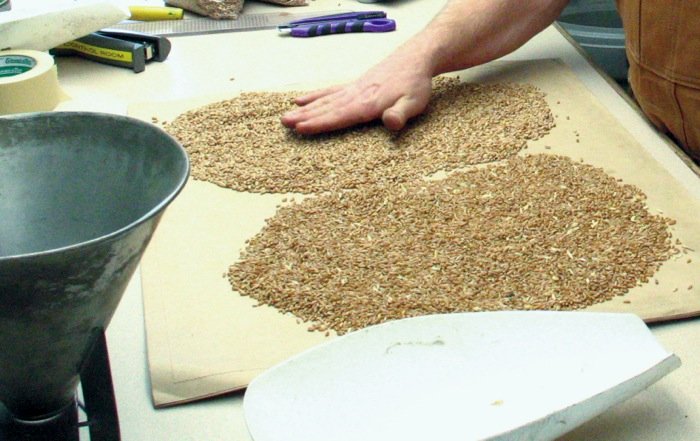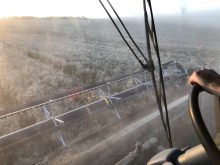Changes are afoot as early as next week for growers from all across Canada — and from the United States — who deliver grain to licensed Canadian buyers, as revised trade rules take effect between the two countries.
With the Canada-United States-Mexico Agreement (CUSMA), the successor trade deal to NAFTA, taking effect, new regulations addressing long-standing complaints from U.S. grain growers will kick in starting Wednesday (July 1).
Amendments to the Canada Grain Act and related regulations — which were covered in Bill C-100, CUSMA’s implementing legislation — will, on that date, allow grain grown in the U.S. to receive an official Canadian grade, if it’s of a variety registered in Canada.
Read Also

U.S. grains: Soybeans rise on China demand hopes; corn and wheat rebound
Chicago Board of Trade soybean, corn and wheat futures rose on Monday on signs of progress towards the end of a record-long U.S. government shutdown, along with expectations of a revival of U.S. soybean exports to China, analysts said.
C-100 also removes the requirement for a country-of-origin statement on inspection certificates for grain grown in the U.S., also starting July 1.
Statements of origin for phytosanitary or customs requirements “will not be affected,” according to the Canadian Grain Commission (CGC).
Toward those ends, the CGC will soon also require anyone — and that includes growers in both Western and Eastern Canada, growers in the U.S., and licensed grain companies — to complete a declaration of eligibility when selling grain to a CGC licensee.
That requirement will take effect with the start of the 2020-21 crop year on Aug. 1.
U.S. producers who deliver grain to Canada will have the same obligations as Canadian producers, the CGC said, and the declarations requirement “will help accommodate U.S. grain by ensuring reliable information on seed registration is provided.”
The declarations will also ensure producers “receive the appropriate grain grade and payment for deliveries,” the CGC said Tuesday in a release.
The declaration rules will “build” on the process already used across much of the grain sector in Western Canada, the CGC said.
In Eastern Canada, where delivery declarations haven’t previously been in use, the CGC said producers and licensees will have until July 1, 2021 to comply with the rule — and the commission will “work with grain sector stakeholders” to phase it in during the coming crop year.
“Delivery declarations will protect Canada’s quality assurance system while allowing American grain producers to receive an official grade,” CGC chief commissioner Patti Miller said in Tuesday’s release.
‘Small volumes’
U.S. growers and grower groups have, over the years, voiced concerns about “discriminatory treatment” of U.S.-grown wheat, the CGC said, “particularly as it relates to statutory grading.”
Until now, any type of imported grain has been prevented from receiving statutory Canadian grades based on origin, so U.S.-grown grain delivered to a primary elevator in Canada couldn’t get an official Canadian grade, even if the grain was of a variety registered in Canada.
The U.S. has “perceived this as a barrier to trade with Canada and a trade irritant,” the CGC said.
Agriculture and Agri-Food Canada, in a May 31 statement, said past levels of U.S. producer deliveries into Canada’s grain handling system have had more to do with market conditions — such as delivery distances or currency exchange rates — than any regulation or policy on the Canadian side.
The regulations being changed for CUSMA “will not change how Canadian grain is delivered in the primary elevator system in Canada, and will have minimal impact on the Canadian grain sector,” AAFC said last month.
“Small volumes of U.S. grain regularly move through the Canadian licensed elevator system, and this agreement is not expected to significantly influence this trend.”
As for grain quality and end uses, the changes coming up “will not impact Canadian consumers,” the CGC said.
U.S.-grown grain delivered into Canada “will need to meet the same rigorous quality standards as Canadian grain” and consumers “can continue to expect grain and milled products that are dependable and safe.” — Glacier FarmMedia Network















